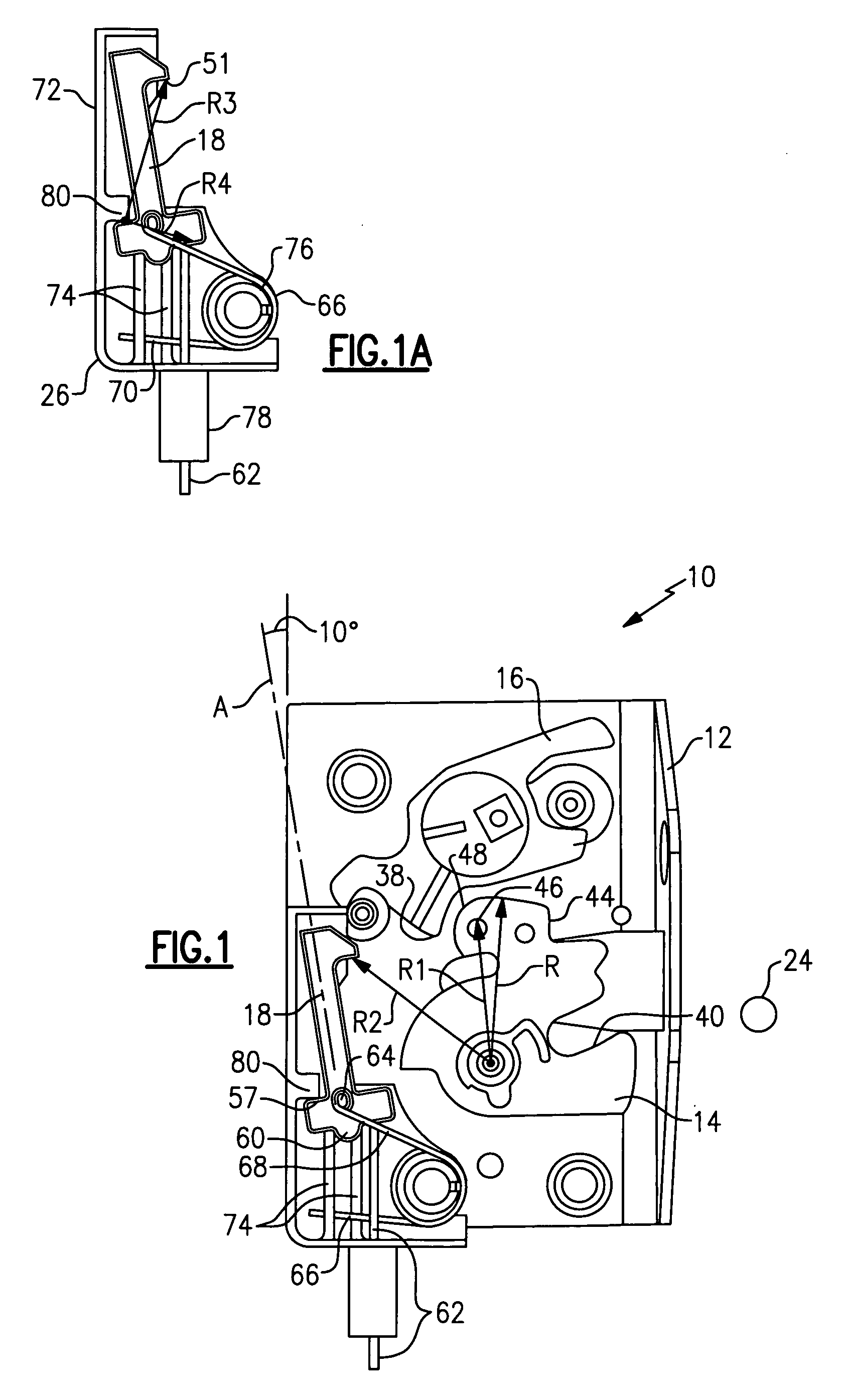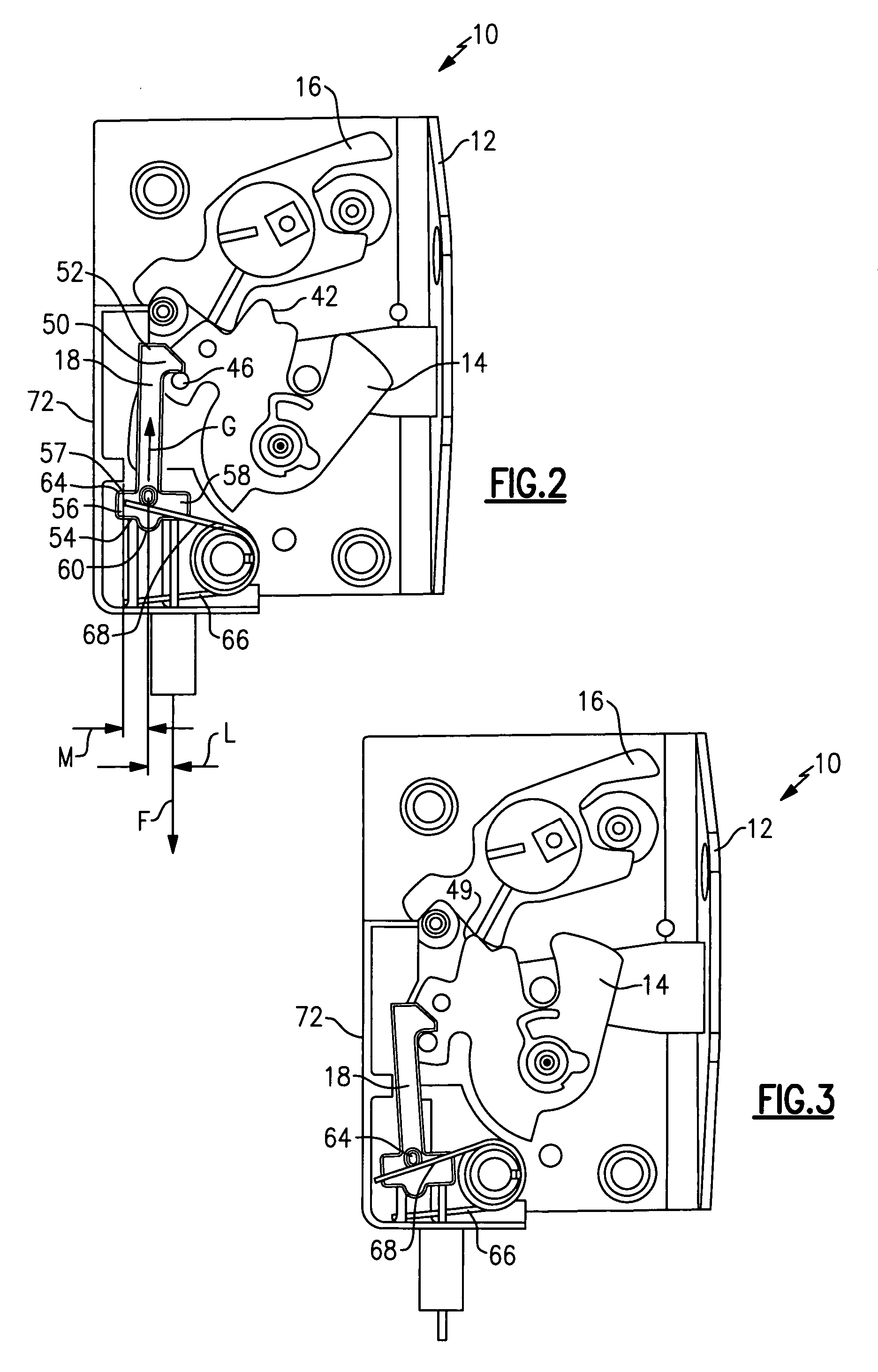Latch for a vehicle
a technology for latching and vehicles, applied in the field of latching, can solve the problems of affecting the safety of passengers in vehicles, requiring high cost and/or heavyness, and system incorporating several features, etc., and achieves the effects of convenient and fast assembly, easy and cheap production, and simple closure mechanism
- Summary
- Abstract
- Description
- Claims
- Application Information
AI Technical Summary
Benefits of technology
Problems solved by technology
Method used
Image
Examples
Embodiment Construction
[0022] As shown in FIG. 5, a latch assembly 10 includes a latch chassis 12, a latch bolt in the form of a rotating claw 14, a pawl 16, a closure element 18, a transmission path 20 and an actuator 22.
[0023] The chassis 12 is a retention plate made of metal, such as steel, for example. Holes 30 enable the fully assembled latch assembly 10 to be secured to an associated door. The chassis 12 includes a mouth 32 for receiving a striker 24 (shown in FIG. 1). The claw 14 rotates about a claw pivot 34 mounted on the chassis 12, and the pawl 16 rotates about a pawl pivot 36 mounted on the chassis 12.
[0024] As shown in FIG. 1, the pawl 16 includes a pawl tooth 38. The claw 14 includes a claw mouth 40 for receiving the striker 24, a closed abutment 42 (shown in FIG. 2) and a first safety abutment 44. The rotating claw 14 also includes a power closure abutment in the form of an upstanding pin 46.
[0025] As shown in FIG. 2, the closure element 18 is generally elongate and includes a first end ...
PUM
 Login to View More
Login to View More Abstract
Description
Claims
Application Information
 Login to View More
Login to View More - R&D
- Intellectual Property
- Life Sciences
- Materials
- Tech Scout
- Unparalleled Data Quality
- Higher Quality Content
- 60% Fewer Hallucinations
Browse by: Latest US Patents, China's latest patents, Technical Efficacy Thesaurus, Application Domain, Technology Topic, Popular Technical Reports.
© 2025 PatSnap. All rights reserved.Legal|Privacy policy|Modern Slavery Act Transparency Statement|Sitemap|About US| Contact US: help@patsnap.com



